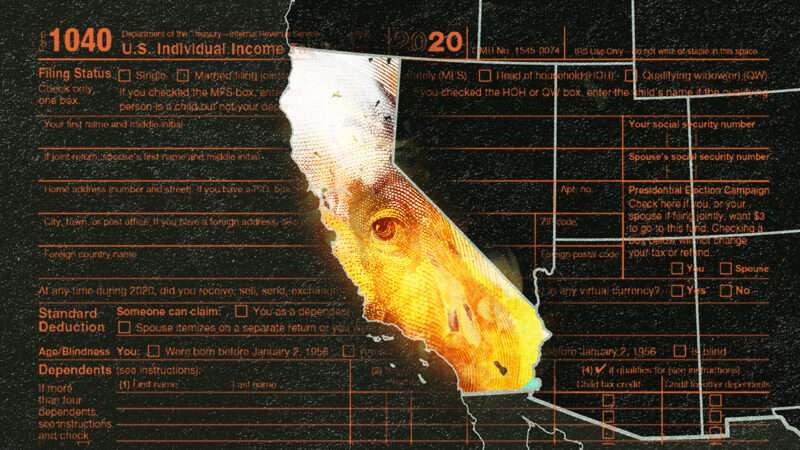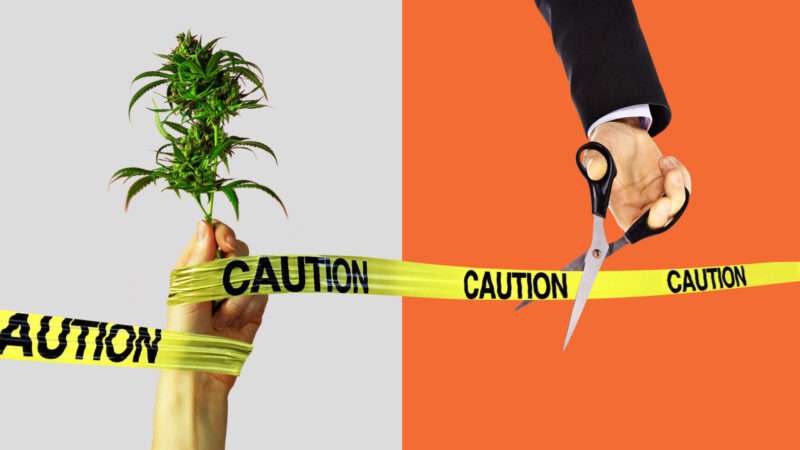With medical marijuana legal in 36 states and recreational marijuana use now approved in 18, more Americans than ever before are admitting to using cannabis during pregnancy. Though many doctors still caution against it out of an abundance of caution, some medical groups warn against prosecuting pregnant cannabis users for child endangerment or using positive drug tests to declare them unfit mothers since these interventions can be counterproductive to actually protecting kids.
Panic about drug use by pregnant women is nothing new. Remember “crack babies“? But root issues are seldom addressed, like the fact that it’s difficult for pregnant drug users to find rehab or detox programs that will even accept them, let alone ones they can afford. Instead, each new wave of illegal drug panic and crackdowns—from crack to meth to opioids—has spurred new excuses for monitoring pregnant women, overriding their consent, and applying strict laws against them.
When the State Intervenes
In Alabama, hundreds of pregnant women have been prosecuted for positive drug tests, even in the absence of any harm to their offspring. “Since 2006, the law has been used to charge nearly 500 women with endangering their unborn children,” according to a ProPublica investigation in 2015. “A woman can be charged with chemical endangerment from the earliest weeks of pregnancy, even if her baby is born perfectly healthy.”
ProPublica notes that marijuana was involved in 24 percent of Alabama’s pregnancy-related prosecutions for chemical endangerment of a child, but it’s unclear whether marijuana was the only drug involved versus how many cases involved multiple substances. Still, a number of cases from the past several years suggest that arresting and prosecuting pregnant women for pot use alone is not that rare.
So far this year, at least four pregnant Alabama women have faced chemical endangerment charges. If convicted, they face up to 10 years of prison time in the absence of fetal exposure or harm and up to 20 years if the child shows signs of exposure.
High courts in three states—Alabama, Oklahoma, and South Carolina—have affirmed that it’s OK to use general child abuse statutes in the criminal prosecution of pregnant women who test positive for any illegal drug, and a Tennessee law specifically criminalizes the use of narcotics by pregnant women as assault.
South Carolina joins Alabama in using especially brutal enforcement. In Myrtle Beach, Grand Strand Regional Medical Center staff called the cops on a woman whose child tested positive for marijuana in 2019. New mother Lisa Marie Adams was arrested at the medical center where she gave birth and charged with unlawful neglect of a child. In 2019 and 2020, at least two other Myrtle Beach–area women in 2019 and 2020 faced the same charge, which can mean up to 10 years in prison, after either admitting to smoking marijuana while pregnant or having a drug test show traces of it.
In Louisiana, in 2019, a woman was charged with child desertion and second-degree cruelty, punishable by up to 40 years imprisonment, for smoking pot while breastfeeding. In at least three states—Minnesota, South Dakota, and Wisconsin—drug use during pregnancy can lead to involuntary civil commitment. At least 23 states say any drug use during pregnancy is considered child abuse, according to the Guttmacher Institute.
Even in states without this explicit policy, a single positive test can trigger longer hospital stays, temporary separation of moms from newborns, and investigation by child protective services (CPS).
In Pennsylvania, a woman told local news in 2019 that despite being prescribed medical marijuana and having her obstetrician approve of continued use during pregnancy, she had still been investigated by the state’s children’s services department. In New York City, a woman who tested positive for marijuana at a prenatal visit and told her doctor she was using marijuana to manage extreme nausea gave birth several months later to healthy twins who tested negative for cannabinoids and all other drugs. The New York Administration for Children’s Services still filed a neglect petition against her.
When Consent Is Overridden
Back in 2000, the Supreme Court ruled that it’s illegal to drug test pregnant women without their consent, but this hasn’t stopped some hospitals from doing it. Though consent is needed to drug test pregnant women or new mothers, it’s not needed to drug test their babies immediately after birth.
In Cincinnati, Ohio, where most hospitals have participated in a universal screening program since 2013, mothers giving birth are asked to consent to drug testing. If they refuse, their baby is tested. Hospitals in Alabama often “test mothers and babies without explicit consent and without warning about the potential consequences,” a 2015 investigation from ProPublica and AL.com found. “In some parts of the state, hospitals test on a case-by-case basis, employing criteria that virtually ensure greater scrutiny for poor women.”
Advocates for universal drug testing say it’s important for overcoming medical staff prejudices in deciding who gets tested, which can break down along race- or class-based lines. But bias can still be introduced under a system of universal testing since there’s still plenty of discretion about what to do with the results. “Black women are more likely to be reported to Child Protective Services for prenatal substance use than are White women, even when their substance use status does not differ,” reported the Journal of the American Medical Association in February 2021.
“The problem is not actually the testing itself. The problem is what happens in response,” Sarah Roberts of the University of California San Francisco’s Department of Obstetrics, Gynecology and Reproductive Sciences told Gothamist last fall, after New York City announced public hospitals would stop drug testing pregnant women without their explicit consent.
Hospitals don’t tend to advertise drug testing policies and are often tight-lipped about them when questioned, perhaps for fear of opening themselves up to lawsuits. It’s hard to show bias or negligence if no one knows any details.
Reporters with WCPO Cincinnati talked to eight local hospitals with voluntary universal drug testing for people delivering babies. They found none tracked the instances or outcomes of false positive drug tests, despite several local lawsuits alleging hospitals had called social services over false positive tests.
Hospitals are not required to keep track of the number of false positives produced by their drug tests, even though these tests are unreliable. One 2013 study found that many common baby soaps could trigger a positive urine test for marijuana, while other tests have a hard time differentiating cannabidiol (or CBD, the non-psychoactive cannabis compound) from its psychoactive cousin tetrahydrocannabinol (THC). A range of common substances can produce false positives for amphetamines, opiates, and more. Hair tests are sometimes seen as more reliable, but they’re prone to picking up environmental exposure and are more sensitive to dark hair.
Disparate Enforcement
According to a 2020 Movement for Family Power report, “a newborn positive toxicology [report] is sufficient to allow a CPS agency to open an investigation in every jurisdiction,” though “going from an open case to a finding of maltreatment” is incredibly subjective and varies greatly between states, counties, cities, or even courtrooms within the same jurisdiction. “In some states, evidence that a newborn was exposed to cannabis in utero could result in immediate removal,” writes report author Lisa Sangoi.
This is ludicrous. While it’s well-established that cigarette smoking or excessive alcohol consumption can cause serious harm to growing fetuses, research suggests much less risk posed by fetal exposure to marijuana. Taking a baby from its mom because she used marijuana could do more harm than good.
And while calling child protection agencies may seem harmless, it forces families into a system of bureaucracy and surveillance that can be tough for many parents to get out from.
It’s unclear that policies cracking down on pregnant mothers for drug use really produce healthier pregnancies. Jail is no place for good prenatal care. And the threat of criminal sanctions—or having children taken away—may actually prevent pregnant drug users from seeking sufficient prenatal care, or stop pregnant women who do need help with substance abuse issues from admitting so to their doctors.
Unfortunately, separating newborns from their mothers will sometimes be in a child’s best interest. But considering the high costs of separation soon after birth—plenty of research establishes the importance of sustained early contact between mother and child for both physiological and psychological development—this should be reserved for extreme situations.
To protect children and families, authorities need to stop seeing pregnant women—drug users included—as mere vessels for their unborn children. Creating the best possible outcomes for both mom and baby often means treating pregnancy drug use as a medical issue, not a license for highly punitive criminal justice intervention that runs the risk of making outcomes worse.

from Latest – Reason.com https://ift.tt/3eu9YWu
via IFTTT



